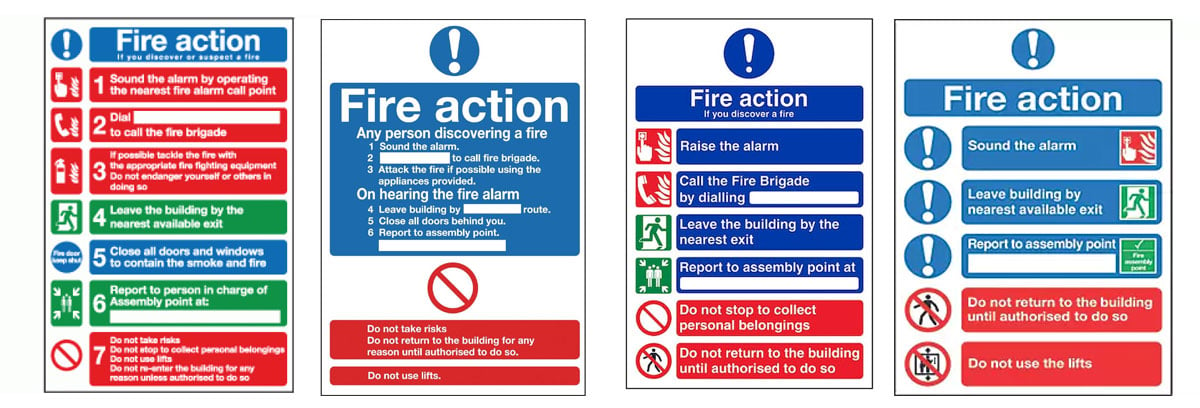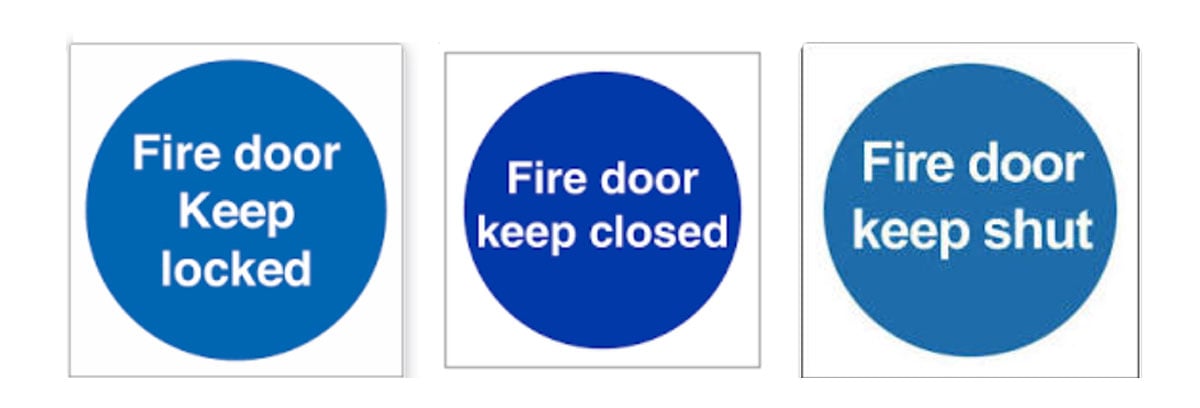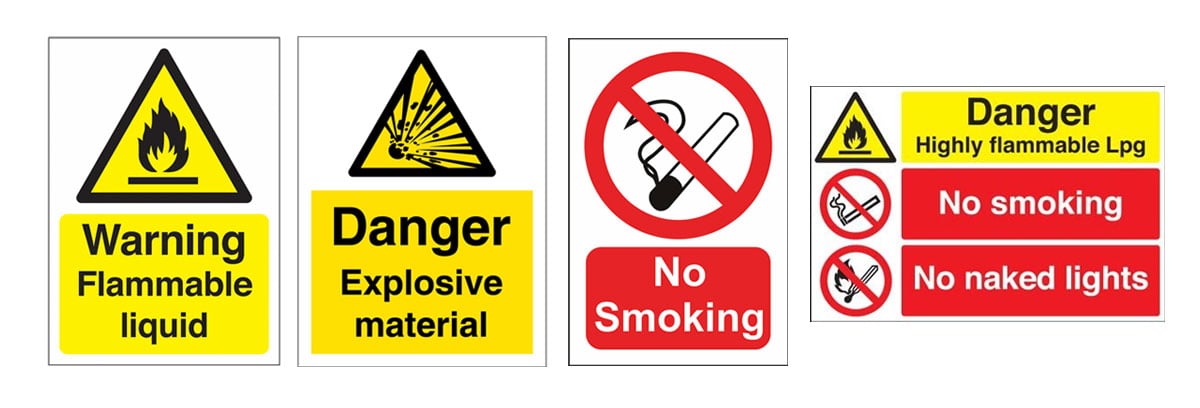What Fire Safety Signage do I need?
What regulations cover Fire Safety Signage?
Fire safety signage requirements are covered by two main pieces of fire safety legislation: The Regulatory Reform (Fire Safety) Order 2005 also known as RRFSO and The Health and Safety (Safety Signs and Signals) Regulations 1996.
The ‘RRO’ – is the cornerstone of fire safety in the UK, bringing together all laws relating to fire safety in one place, not just fire safety signs. The Health and Safety (Safety Signs and Signals) Regulations 1996 apply specifically to safety signage.
What fire safety signage do you need?
All business premises will need at least 2 or 3 fire safety signs. Which signs you require depends on the layout of your premises, the nature of their use, and the fire-fighting equipment you have. This will be determined by a Fire Risk assessment.
What are the fire safety sign categories?
There are 4 main types of fire safety signs in the UK, however these are sometimes sliced and diced into 5 or more categories. For the purposes of this article we’ll use the 4 category model:
- Fire Action Notices explaining what to do in case of fire
- Fire Exit and Door signs marking fire exit routes, doors and assembly points
- Fire Equipment and Alarm signs showing the location of fire-fighting equipment such as extinguishers and alarm points
- Warning and Prohibition safety signs alerting people to danger and warning them of unsafe actions such as ‘Danger Flammable Gas’ or ‘No Smoking’
1. Fire Action Notice – what to do in case of fire
The Fire Action Notice’s purpose is to make sure that anyone working in or visiting your building knows what to do if they discover a fire or if they need to evacuate the building. These typically include the following information:
- The phone number to call the fire brigade
- The exit to use to leave the building
- Where the assembly point is
- Any additional instructions specific to the building
All commercial premises must display a Fire Action Notice. Best practice guidelines recommend that you display a Fire Action Notice next to every Fire Alarm call point, and at every final exit door, where they are most likely to be seen in the event of fire.
2. Fire Exit Routes, Doors, and Assembly Points
Fire Exit Signs
There are some very limited situations where commercial premises won’t need an exit sign, for example a very small, simple layout with a very obvious exit point. For most buildings however, fire exit signs are a necessity and will be determined by how easily occupants would be able to find their way out of the building in the event of fire, especially if they’re not familiar with the layout. We are all familiar with directional arrow signage featuring the “running man” leading occupants along the shortest route to escape.
Fire Exit Doors
All fire exit doors must carry a ‘Fire door, keep shut’ sign. This is an example of a blue mandatory or “must do” notice, meaning that it gives an instruction which must be followed for the building to be safe from fire. Depending on the type of exits you have, you may also need to provide instructions on how to operate the door, or indicate that a door opens automatically.
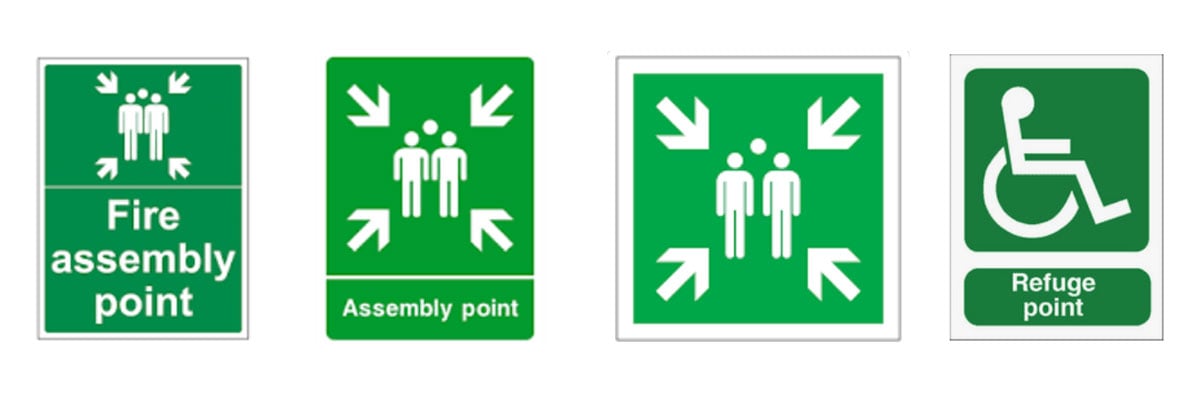
Fire Assembly Points
Chose a fire assembly point (sometimes called a muster point) that is far away enough from the building to avoid hampering the fire brigade and clear of any danger from the fire including falling debris. It needs to be clearly signposted and take account the type of occupants who will need to evacuate the building i.e. suitable for the young, old or disabled.
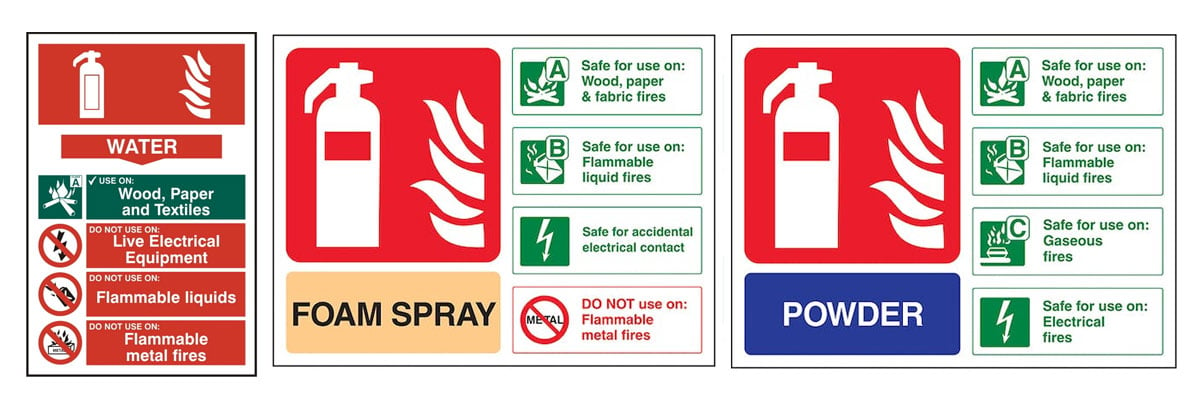
3. Fire equipment and alarm point signs
In the event of a fire, it’s vital that occupants know where to find fire-fighting equipment, how it works and which equipment they can use, depending on the type of fire. The RRFSO states that non-automatic fire-fighting equipment must be ‘easily accessible, simple to use and indicated by signs’ located in a clearly visible position close to the piece of equipment.
While there are many fire equipment signs, including fire hose reel and fire blanket signs, the most common is a fire extinguisher ID sign, which details the type of fire extinguisher and which classes of fire can be tackled with it. There are several classes of fire, which are distinguished by their fuel source. These include:
- Class A fires: carbonaceous materials
- Class B fires: flammable liquids
- Class C fires: flammable gases
- Class D fires: burning metals
- Electrical fires
- Class F fires: cooking oils and fat
The specific fire extinguishers designed to tackle that sort of fire are:
- Water fire extinguisher
- Foam fire extinguisher
- Dry powder fire extinguisher
- CO2 fire extinguisher
- Wet chemical fire extinguisher
Fire extinguisher ID signs quickly show people what the fire extinguisher is suitable for, which is vital given that using the wrong type can quickly make a fire worse. Statistics show 95% of fires tackled with an extinguisher are neutralised within 2 minutes, so being able to locate the right type of fire extinguisher quickly is absolutely critical to the safety of your business.
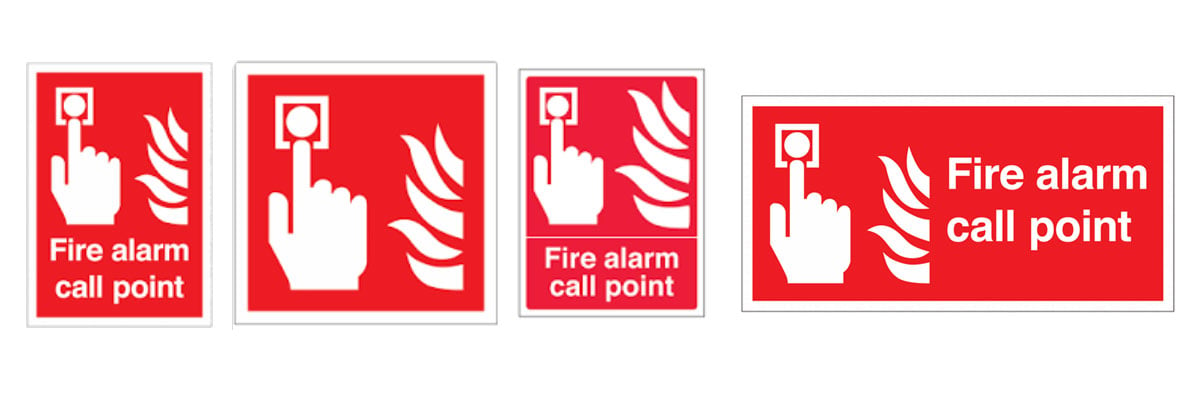
A clearly signposted fire alarm call point is also essential in directing people to the nearest alarm. Every call-point should have the relevant fire alarm sign, and if you also post Fire Action Notices here, the person raising the alarm will have all the information they need to proceed.
4. ‘Warning’ and ‘Prohibition’ fire safety signs
Warning signs alert employees to fire hazards on the premises. This can include flammable substances such as gas, chemicals or oil. They are generally yellow and black, and often (but not always) triangular.
Prohibition or "Do Not..." signs are used to stop people from engaging in activities that may heighten fire risks, for example, smoking or using naked flames. They are usually circular, with a red band around the outside and a diagonal red line across the centre. These are frequently used in conjunction with Warning signs or combined frtgv into one fire safety notice.
Summary
We hope this guide helps explain the regulations regards fire safety signage. As a quick summary of the main points, if you are responsible for the fire safety of commercial premises, these are the signs that you must have and may need to have:
- Fire Action Notice – mandatory for all premises
- Fire exit signs – needed for all but the smallest & simplest of properties
- Fire Extinguisher ID sign – as extinguishers are mandatory, all premises must have at least one extinguisher ID sign
- Fire alarm call point signs – if you have a fire alarm, then call point signs are mandatory
- Other fire equipment signs – if you have a hose reel or a dry riser, you will need to signpost them
- Warning & Prohibition signs – if you have an extra risk of fire on your premises you will probably need these
About Lisa Robinson
Lisa - word smith to the gods.
Tags: Health & Safety, Safety Signage

